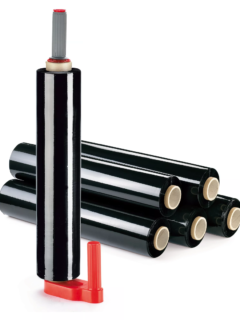Bubble wrap is a versatile material that is widely used in the packaging and protection of various objects. However, its protective properties do not just stop at preventing mechanical damage. Can bubble wrap also protect against frost? Read on and find out!
Does bubble wrap retain heat?
Bubble wrap is known for its insulating properties, which are the result of air bubbles trapped in its structure. These bubbles act as an insulator as they hold air in place and create a barrier against heat transfer.
As a result, bubble wrap can help keep heat inside and protect against cold air from outside. This makes it a great material to use as an additional insulation layer, for example under a mattress. In this way, you can improve your thermal comfort when sleeping during the cold months.
Bear in mind, however, that although bubble wrap has good insulating properties, it is not a good solution for long-term heating.
Would you like to know more about bubble wrap? Be sure to read the article: Everything you need to know about bubble wrap.
Does bubble wrap insulate windows against the cold?
Insulating your windows with bubble wrap is a simple and effective way to improve the thermal insulation in your home. Bubble wrap acts as an additional barrier that reduces heat loss and reduces the influence of cold air from outside. How do you insulate your windows with bubble wrap? Check out the step-by-step instructions on what you need to do.
- Prepare the foil – cut off a suitable piece of bubble wrap to fit the window surface.
- Ensure a clean surface – make sure the glass is clean and dry.
- Stick the bubble wrap to the window – you can also lightly soak it in water so that the bubble wrap adheres better to the glass. In turn, using adhesive tape will ensure a permanent fix.
This way of insulating your windows is simple and cheap, and effective in reducing your heating bills.
Is bubble wrap suitable for roof insulation?
Bubble wrap will also prove useful for roof insulation – it will improve the overall effectiveness of thermal insulation. It can be used in a variety of building conditions and its effectiveness varies depending on the specific roof construction and materials used.
Despite its thermal properties, it is worth remembering that bubble wrap should not be used as the main insulation material. However, it will work great as a way to supplement existing insulation.
In the context of insulating a roof, bubble wrap can also help to soundproof and protect against moisture, further increasing its usefulness in construction.
How can bubble wrap be used to protect plants from frost?
Bubble wrap is an excellent material for protecting plants from frost and low temperatures. Its insulating properties help to maintain a stable temperature around plants, which is crucial in winter. But what is the best way to protect plants using bubble wrap?
- Prepare your plants – make sure your plants are healthy and well hydrated before the frost arrives.
- Wrap the plants with bubble wrap – try not to leave gaps. The foil should fit snugly, but not too tightly so as not to damage the plants.
- Secure the foil – use duct tape or string to attach the foil permanently to the plant.
Bubble wrap and its insulating properties
Bubble wrap is a versatile material that can be used not only in packaging, but also in various thermal insulation applications. Thanks to its properties, you can effectively protect your plants, insulate windows and roofs and improve the thermal comfort in your home.
It is worth bearing in mind, however, that despite its many advantages, bubble wrap is not a substitute for professional insulation, but can be an effective additional layer of protection.














